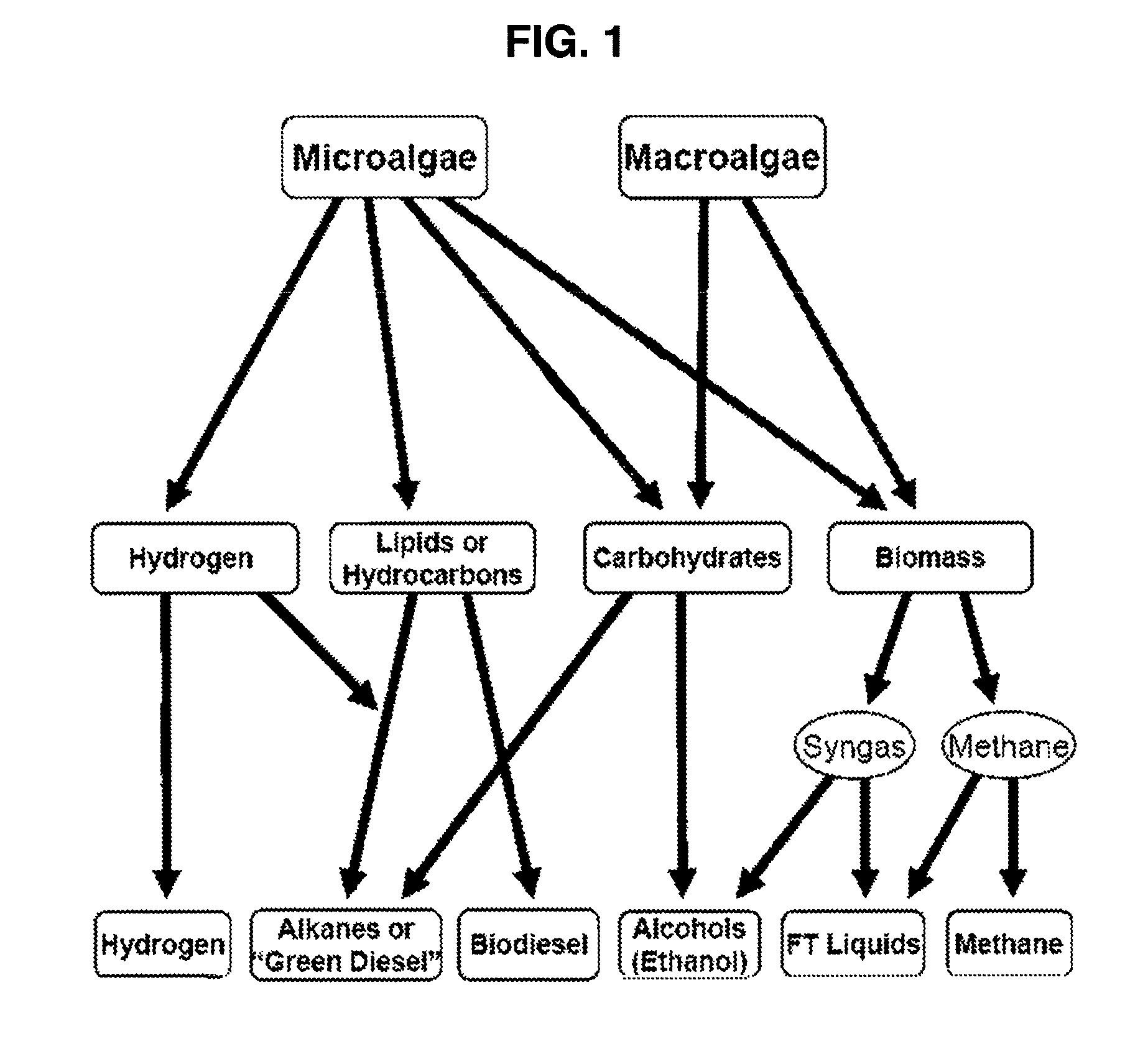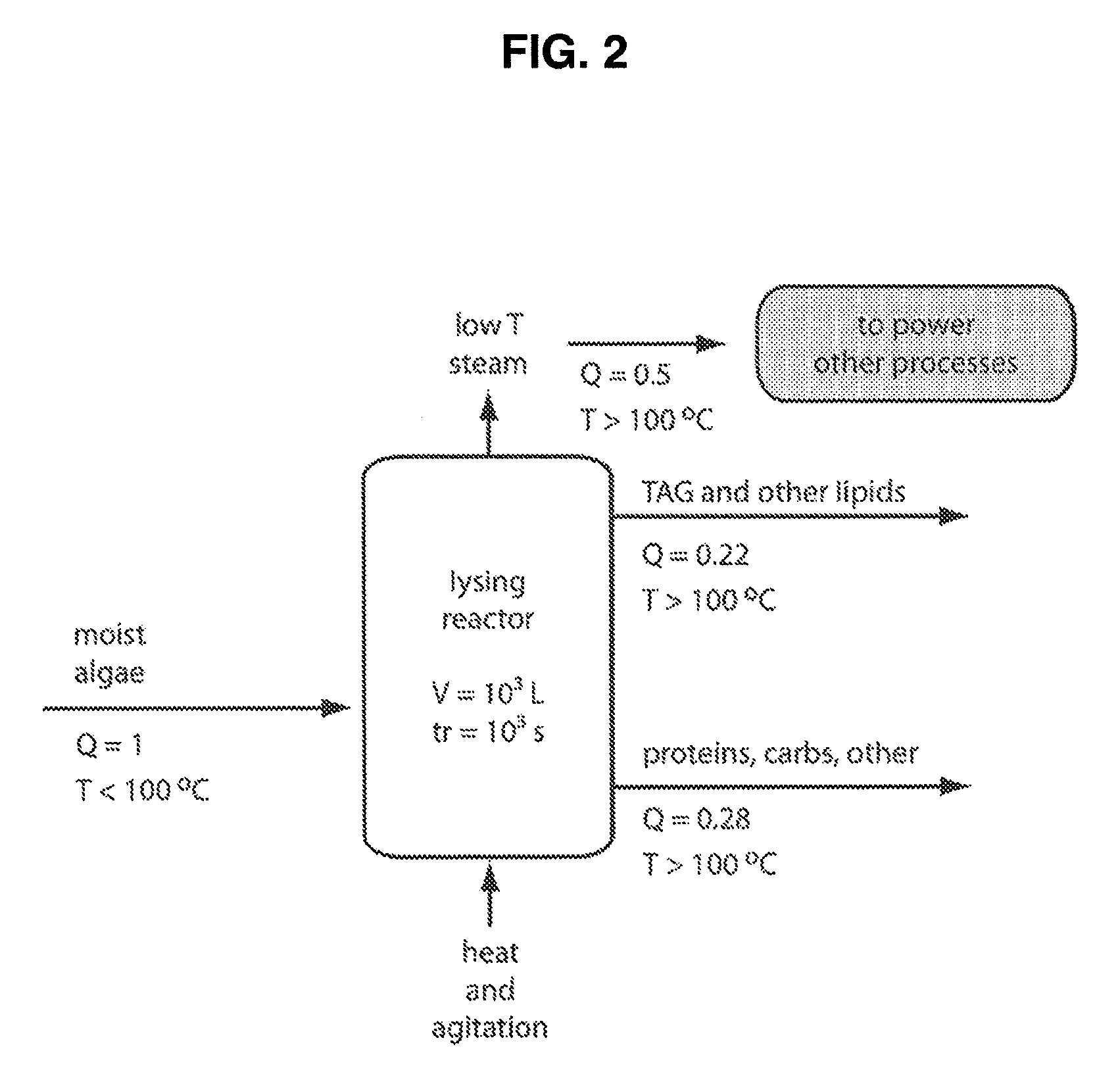Lipid extraction from microalgae using a single ionic liquid
a technology of lipid extraction and microalgae, which is applied in the preparation of sugar derivatives, biomass after-treatment, peptides, etc., can solve the problems of difficult or impossible complete lysis of organic solvents alone, critical partial release of contents, and difficult or impossible partial lysis of cell walls, etc., to achieve easy removal, zero vapor pressure, and gentle heating
- Summary
- Abstract
- Description
- Claims
- Application Information
AI Technical Summary
Benefits of technology
Problems solved by technology
Method used
Image
Examples
Embodiment Construction
[0017]FIG. 3 shows sample results of experiments in which three 1-butyl-3-methylimidazolium (BMIM) ionic liquids were tested for their ability to lyse aqueous suspensions of Chlorella pyrenoidosa (C. pyren.), a lipid-producing freshwater microalgae. All reactions were carried out at temperatures of between 50° C. and 140° C. with mixing, but temperatures above 100° C. were necessary to improve mixing and evaporate water quickly in order to lower the lysing reaction duration to 10-30 minutes. Of the three ILs, only [BMIM]Cl is capable of rapidly and completely lysing aqueous suspensions of C. pyren.
[0018]FIG. 4 illustrates processing steps for extracting triacylglycerols (TAG) and other lipids for production of biofuels and other products from a microalgae cell suspension. An initial algae cell suspension containing, for example, 1-3 grams per liter microalgae cells is dewatered to produce a more concentrated suspension (moist algae) containing between 0.1 and 1 kilogram of microalg...
PUM
| Property | Measurement | Unit |
|---|---|---|
| temperature | aaaaa | aaaaa |
| temperature | aaaaa | aaaaa |
| weight ratio | aaaaa | aaaaa |
Abstract
Description
Claims
Application Information
 Login to View More
Login to View More - R&D
- Intellectual Property
- Life Sciences
- Materials
- Tech Scout
- Unparalleled Data Quality
- Higher Quality Content
- 60% Fewer Hallucinations
Browse by: Latest US Patents, China's latest patents, Technical Efficacy Thesaurus, Application Domain, Technology Topic, Popular Technical Reports.
© 2025 PatSnap. All rights reserved.Legal|Privacy policy|Modern Slavery Act Transparency Statement|Sitemap|About US| Contact US: help@patsnap.com



